Editor’s note:
The photo essay that follows is an excerpt from a larger interactive multimedia piece that appears on the Radio Canada site in French. An English translation from French was done with the help of Prasun Lala and Rola Harmouche.
This work will also be exhibited this summer at the Centre for Sustainable Development (50 Saint- Catherine St. West) from August 10 to August 30.
Naraha, a town located some 20 kilometres south of the Fukushima Daiichi nuclear power plant, had its evacuation order lifted on September 5, 2015. This order had been in effect since the nuclear accident brought on by the tsunami and earthquake in March of 2011. The government had concentrated on decontamination operations for four and a half years, and now the town can finally take its first steps toward recovery. But is this still feasible? The public authorities are encouraging the residents to return, but are they willing? Where are they today? And for those who have come back or are thinking of doing so, what does Naraha look like now? I went to seek out Naraha’s former denizens. Naraha lists its official population at approximately 7,000, but by November 2015, only around 5% had officially returned to live there. Many of the residents were evacuated to the city of Iwaki to the south, including people housed at the Kamiarakawa temporary camp in Iwaki.
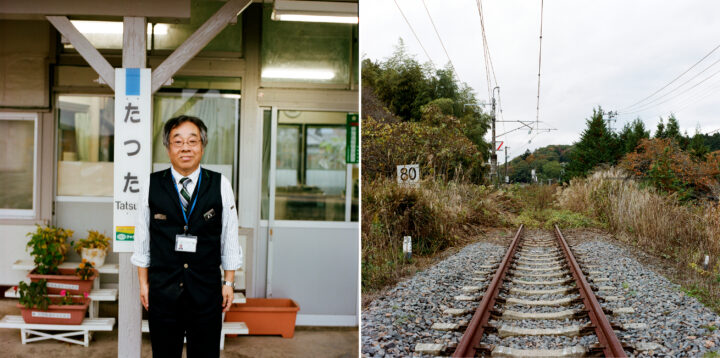
Kamakura Mori works at the Naraha Tatsuta Station. He himself comes from Iwaki, but is very committed to the revival of Naraha. He proudly shows me the many flowers that he has planted in and around the station. Further north, the Joban Line that used to run until Minamisoma ends quite abruptly in the bushes at the edge of town, since its route passes through a zone that is still too contaminated.
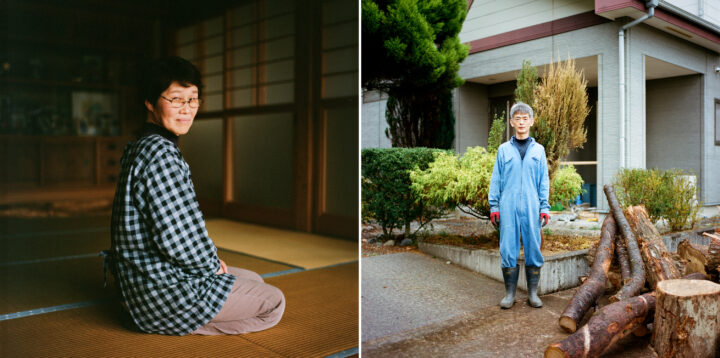
Left: This old woman and her husband returned with the city’s authorization in April of 2015. She and her husband, a carpenter, preferred to come back, even though they knew that none of their friends or neighbours would return. Among these friends and neighbours, many have had their houses demolished. She and her husband had lived in three temporary houses in Iwaki, but felt unwanted by the people there. Her children and grandchildren decided to stay permanently in Iwaki. She says many people in Naraha are labourers at the moment, and have agreed to come here out of avarice or because they are outcasts in society. Right: This man works at the Fukushima Daini plant, a few kilometres north of Naraha, at the boundary of the current evacuation zone. The plant bore less of the brunt of the tsunami than the one at Fukushima Daiichi, but nevertheless remains shut down. He wishes to go back to living in his own house, as do his wife and children, but they still have to discuss their actual return date and have planned to make a final decision in the spring of 2016. He tells me that the government came to decontaminate his house simply by washing the walls and the roof.
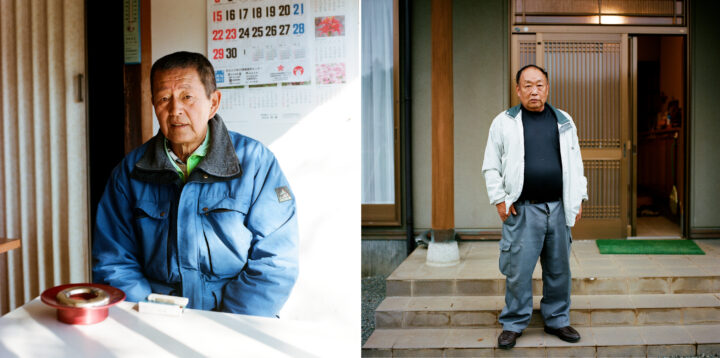
Left: This man returned to his house. He has a newsstand with his sister. Before the disaster, he would sell more than 800 newspapers a day; now, he sells less than a hundred. His house sustained a lot of damage following the earthquake and he was forced to do renovations totalling around $100 000. Right: This man was born in Naraha and he is among those who had requested permission to return to live at home in the summer of 2014. He told me that had I come a little earlier to see him, he would have invited me to dinner to sample the fish that he had caught in the river below his house. He also keeps a garden, and his vegetables are monitored by the municipality. The government came to decontaminate his house, but he preferred to do it again himself.
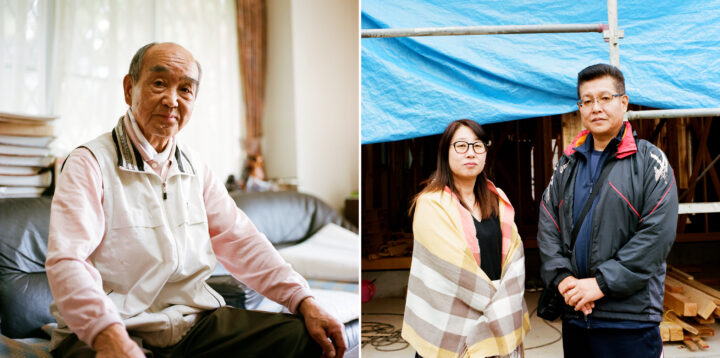
Left: This man is Japanese, but was born in China in 1928. He returned to Japan with his family after the Second World War. He is presently preparing to return to Naraha in the coming weeks, with his spouse. They are now fixing their home damaged by humidity over the last four years. Since the disaster, he has lived with his spouse in temporary housing. He had surgery due to lung cancer two years ago. Right: This couple to the right had started to repair their old home, but it was so badly damaged that they decided to tear it down and rebuild. Of the approximately 40 interviews conducted, they were the only ones who told me that they would return with their children and grandchildren as soon as the school reopened. The gentleman plans to reopen his clothing store on the ground floor.
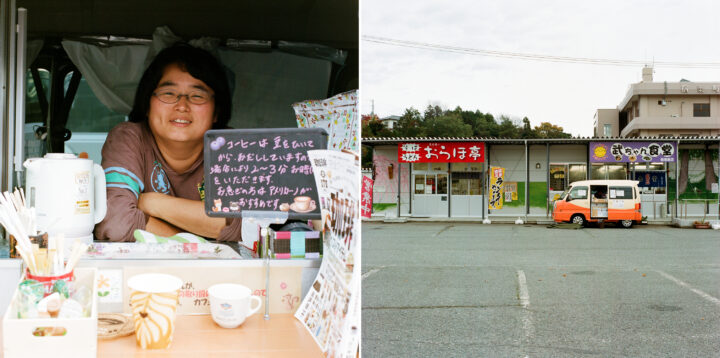
Since April of 2015, Yukiko Takano has returned to work in her small coffee-truck. Her customers are mainly labourers for construction and demolition companies, which are present all over the city. Her mother still lives in temporary housing while waiting for her house to be repaired. Tanako often parks her truck in front of the two temporary restaurants set up by the city (in the back). A few of the employees of these two restaurants are foreigners (Chinese) hired by the city.

This man is a city councillor in Naraha. Stored in front of his house are thousands of slightly radioactive sandbags, the result of decontamination operations. He tells me that the radioactivity is well monitored by the state and he is not at all worried.
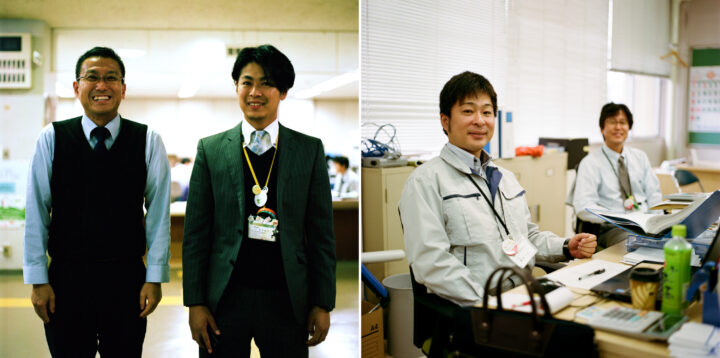
Left: These two people work in Naraha’s town hall. The one to the right, Masahiro Matsumoto, is a native of Naraha but his house was washed away by the tsunami. He doesn’t have the money to rebuild, and anyway, his family has no desire to move back to Naraha. Right: These two men work at the Naraha Mirai community centre, mandated by the city to recreate social ties among the residents who have returned. They publish a neighbourhood magazine and organize social activities for the beautification of the city (growing flowers, etc.) Nitta, to the left, lives in Koriyama, the big city 100 kilometres northwest. A former resident of Naraha, he does not want to come back here because of his two young children.
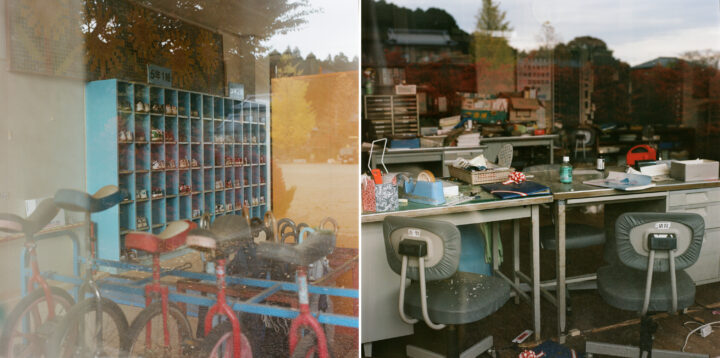
In this school, evacuated since the earthquake, everything has remained as it was. To the left, sports shoes and children’s school bags are still in their lockers.
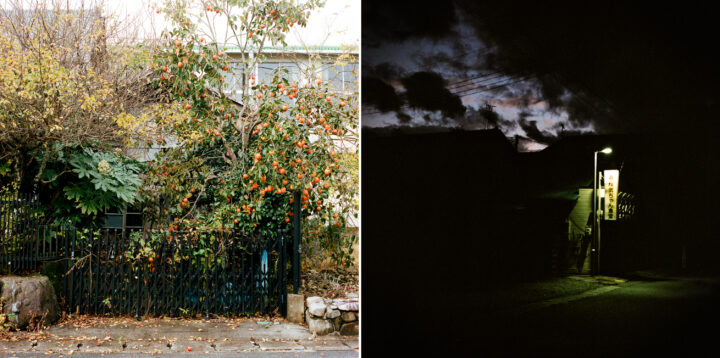
Nature takes its course in many parts of the city. Persimmons, the fruit for which Fukushima was renowned, are found in abundance all over the village. They cover the tree to the left. The city turns on very few public lights at night, and many of the streets are plunged into darkness. Some residents have confided in me that they get scared when night falls. The police make regular rounds; their presence indicated by quiet music that we often hear in the distance.
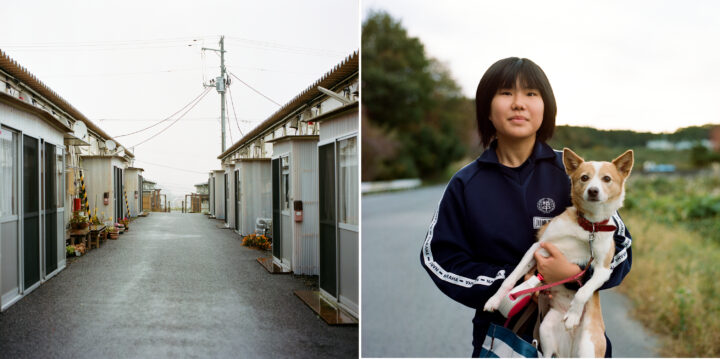
In November 2015, the Kamiarakawa temporary camp located 20 km south of Naraha runs at 94% of its capacity. It houses 473 residents, including 228 families and 45 individuals under the age of 20.
All the camp’s residents are from Naraha. This camp, as with all temporary camps that have been set up after the disaster in Japan, particularly in Fukushima, consists of a row of regularly spaced prefabricated site bungalows. The living spaces are inadequate, and are often much smaller than the former dwellings of those relocated here. Right: This 14-year-old teenager is one of 45 young people living in the camp. She and her parents will not return to Naraha.
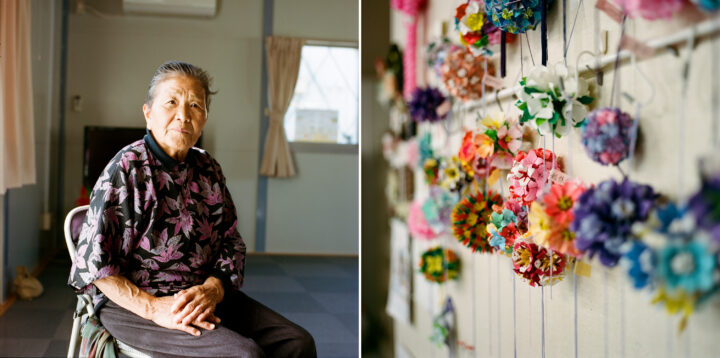
I meet this 88-year-old lady in one of the community halls of the Kamiarakawa camp, and we chat for a while. Her son works at Fukushima Daiichi. In this community hall (on the right), kusudama (modular origami) were recently made.
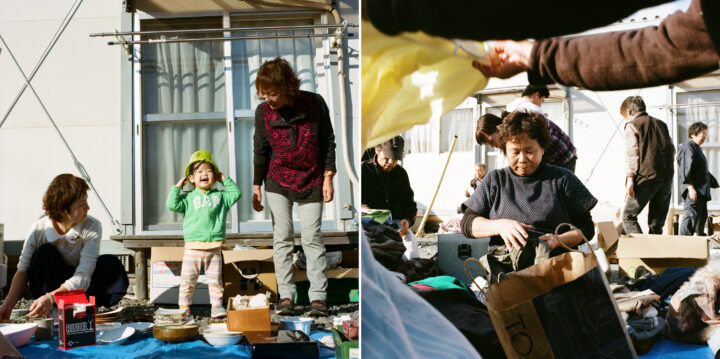
An association called Tsunagu Kai comes to do volunteer work and distribute clothes and other items to camp residents in anticipation of winter. This is also an important social occasion. A small concert with music and singing is given during the handout, and a volunteer nurse takes the opportunity to check up on some of the elderly people present.








